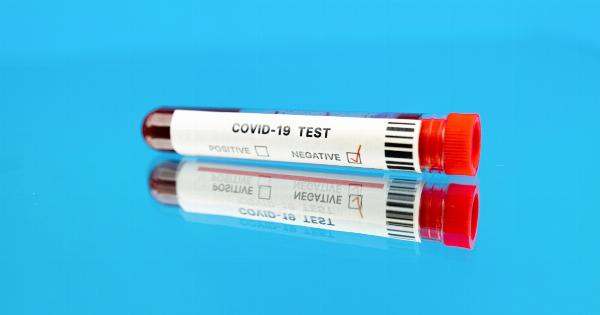Testing is an essential tool in diagnosing, monitoring, and treating illnesses. It involves taking samples from the body, analyzing them, and interpreting the results.
The results help health care providers determine the next course of action, such as instituting treatment, monitoring symptoms, or confirming the absence of a disease. However, sometimes the test results can be negative or delayed, making it difficult to interpret the meaning of the results. This article aims to provide insight into the significance of a negative and delayed test.
What is a Negative Test?
A negative test result means that there is a lack of evidence to suggest the presence of a particular disease or condition. For instance, a negative COVID-19 test result means that the viral RNA was not detected in the sample taken from the individual.
Similarly, a negative pregnancy test result indicates that there is no pregnancy hormone, human chorionic gonadotropin (hCG), in the urine sample.
However, sometimes a negative test result can be misleading. This is especially true if the test is not sensitive or specific enough to detect the disease or condition accurately. False-negative test results can occur for several reasons, such as:.
- The sample was collected too early or too late in the course of the disease
- The sample was not collected correctly
- The test was not performed correctly in the laboratory
- The test is not sensitive enough to detect low levels of the disease-causing agent
- The test result was misinterpreted or misreported
Health care providers are aware of the limitations of each test and will interpret the results based on the individual’s symptoms, medical history, and other laboratory findings.
What is a Delayed Test?
A delayed test result is a result that takes longer to obtain than the standard turnaround time for that test. The turnaround time for most laboratory tests ranges from a few hours to a few days.
However, some tests can take longer to process, depending on the type of test, the laboratory’s workload, and the location of the laboratory.
Delayed test results can have several implications, such as:.
- The individual may experience anxiety or stress, wondering about the meaning of the delayed result
- The individual’s treatment may be affected since health care providers may be waiting for the test results to proceed with the treatment plan
- The individual who is contagious may unwittingly spread the disease to others without knowing their test results
Delayed test results can also occur due to technical or logistical issues, such as:.
- The sample was lost or misplaced
- The test needs to be repeated due to an inconclusive result
- There was an equipment failure or calibration issues in the laboratory, affecting the results
- There was a backlog of samples in the laboratory due to increased demand or reduced staffing
If you experience a delayed test result, it is essential to communicate with your health care provider to discuss the implications and possible next steps.
They may recommend repeating the test, waiting for the result, or proceeding with treatment based on clinical judgment.
Interpreting Negative and Delayed Test Results
Interpreting a negative and delayed test result requires collaboration between the healthcare provider and the individual. It is essential to understand the limitations of each test and the possible implications of the test results.
In some cases, repeating the test or performing additional tests may be necessary to confirm the diagnosis. In other cases, clinical judgment may be necessary to interpret the results and proceed with the treatment plan.
Coping with Negative and Delayed Test Results
Receiving negative or delayed test results can be stressful and anxiety-provoking. It is essential to communicate with your healthcare provider to discuss the potential implications of the test results and possible next steps.
Coping with negative and delayed test results can also involve,.
- Seeking emotional support from a mental health professional, family, or friends
- Maintaining a healthy lifestyle, such as regular exercise, balanced diet, and sleep hygiene
- Practicing stress management techniques, such as mindfulness, relaxation techniques, or cognitive-behavioral therapy
Receiving negative or delayed test results can be a challenging and unsettling experience. Still, it is essential to remember that health care providers are equipped to interpret the results accurately and provide appropriate care and treatment.































